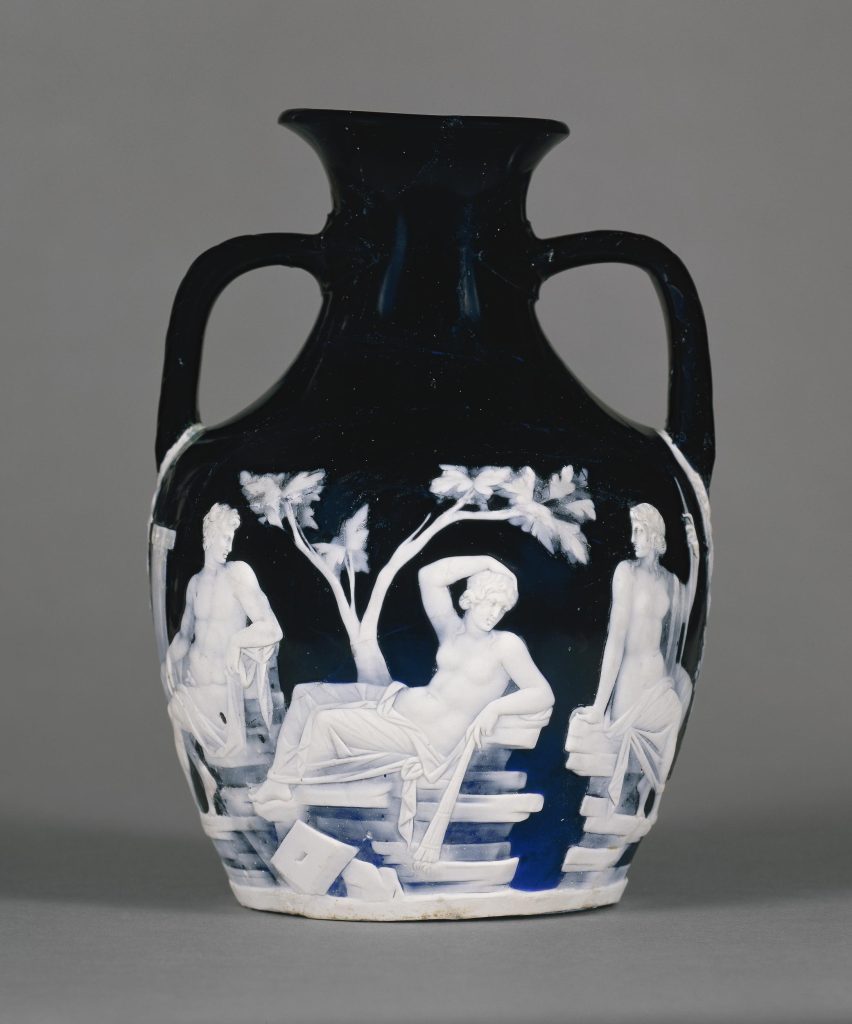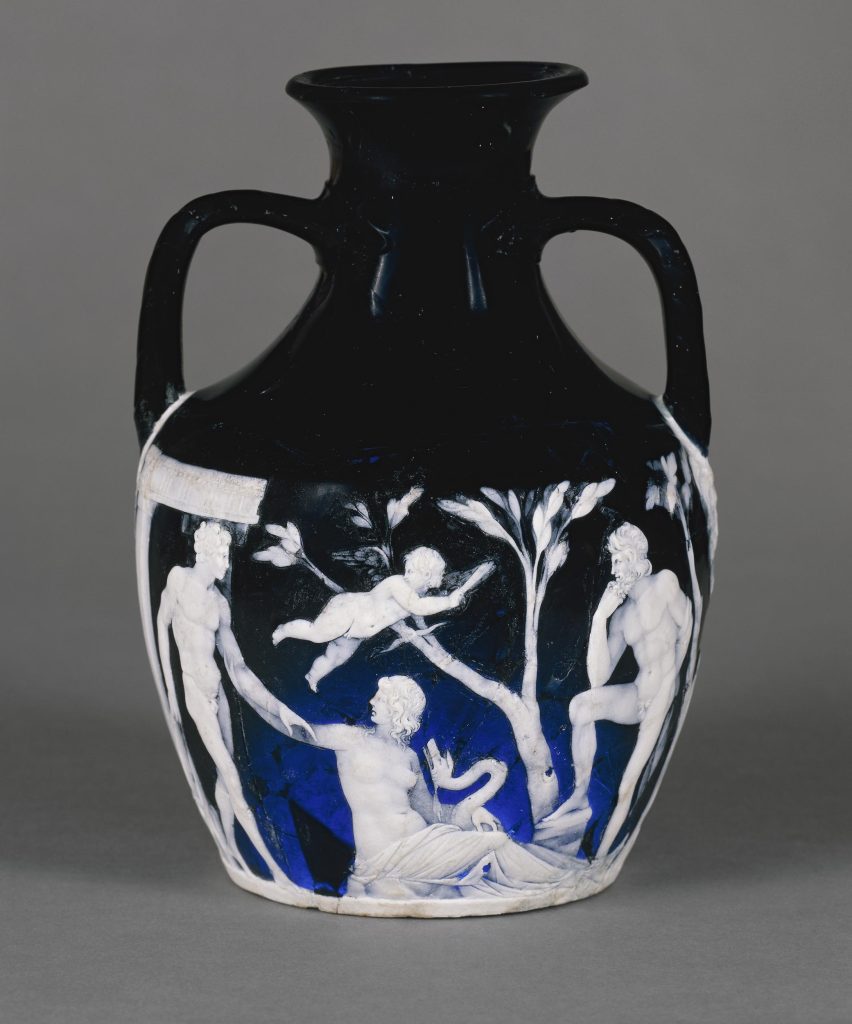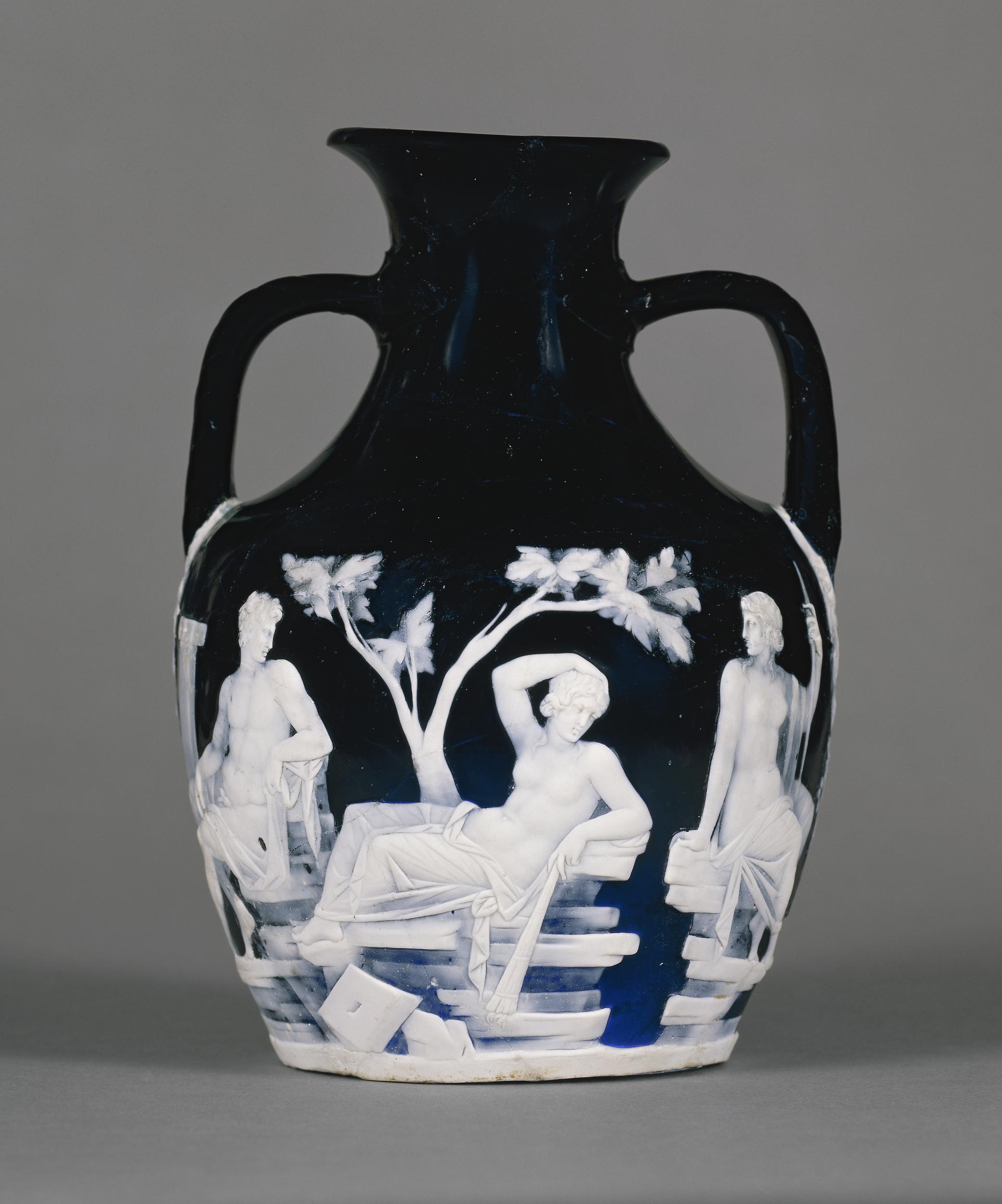Damaged but delectable, this famous glass vessel – known as the Portland vase – is a truly a “riddle wrapped in a mystery inside an enigma…” (and I am sure Churchill would agree).
The thick pearlescent layer overlaying the dark cobalt blue body is painstakingly carved down as if it were a multilayered sardonyx or bandage agate, to form as astonishing but altogether puzzling narrative. The languid characters around its body are encrusted with attributes and tantalizingly portrait-like features. And the debate as to identification rages: is this a mythological courtship? The young dynasty’s foundation myth?



Glass vases made in this ‘cameo’ technique are far between – it was a mind-boggling technology with examples known from only two generations of craftsmen during the early Julio-Claudian period, and one that is not fully understood. The technique’s rarity and that ethereal figural result seem to indicate that it was extremely luxurious and produced (sparingly) for the upper echelons of Roman society.
Glass specialists see two possibilities for how the colored layering effect might have been produced: either by ‘casing’, meaning the roughed out blue vase was fitted into a larger white glass one and the two were fused together, or ‘flashing’, meaning the formed blue vase was dipped into a molten bath of the pearly glass (easier for me to picture…a glass fondue or chocolate dipped strawberry. The real skill came after, with the carving down of the white layer to reveal the blue background, and subsequent grinding and polishing inside and out.
How little we really we really know about the elusive arts of the top tier of luxury arts, so infrequently were they achieved and so haphazard was their survival. And how this vase might have survived is a story for another day….




